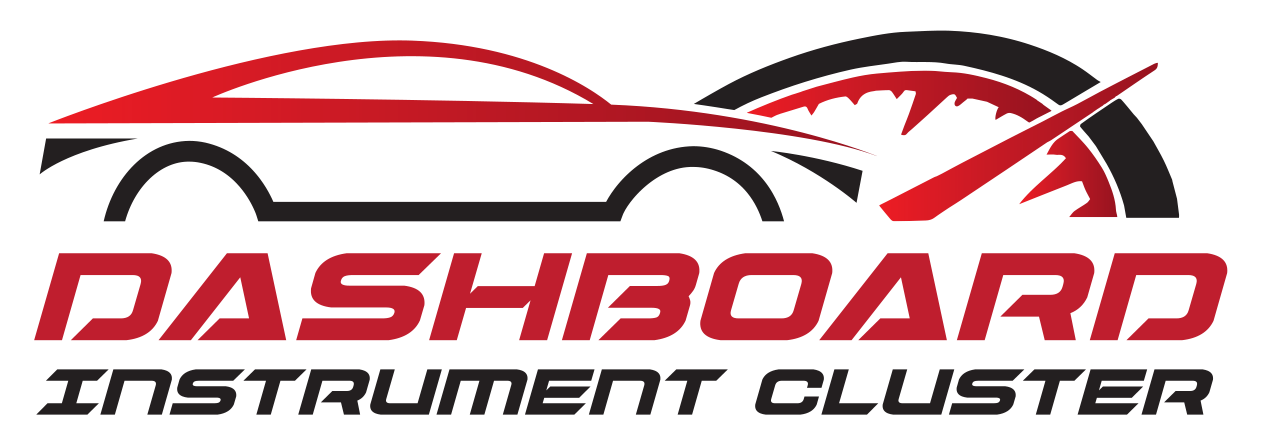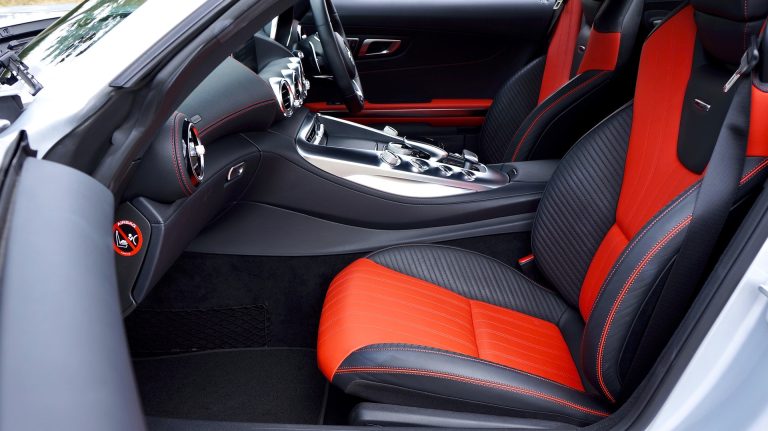
Every truck tells its story through its instrument cluster. On the dashboard, this unit records miles traveled, monitors engine performance, and alerts the driver when something is wrong. In Volvo Trucks, the cluster is not just a group of gauges and lights. It serves as the central hub for vital information about speed, fuel, braking systems, and engine health.
When the instrument cluster fails, the driver is left without clear feedback about what is happening under the hood. This is more than an inconvenience. Wrong readings, blank screens, or stuck warning lights can cause safety problems and costly breakdowns. In this article, we explore why Volvo Trucks instrument clusters fail, the most common problems, how a proper repair works, and why a specialized provider like Dashboard Instrument Cluster is the right partner for restoring these units.
The instrument cluster in a Volvo truck does far more than display basic readings. It connects straight to the truck’s electronic control units and data network. That means every message about engine performance, braking response, and transmission health passes through this single point. If it fails, the driver is effectively driving blind.
Modern clusters use microprocessors, printed circuit boards, and LED or LCD screens instead of older mechanical dials. This design makes them extremely accurate but also more sensitive to wear, moisture, and electrical fluctuations. A voltage surge from a faulty alternator can damage internal regulators. Condensation inside the dashboard can corrode circuit traces. Even a minor solder crack can cause the speedometer to flicker or freeze.
Repairing this equipment requires more than just replacing parts blindly. A true service provider isolates problems at the circuit level and recalibrates the system to match factory specifications. At Dashboard Instrument Cluster, technicians use advanced diagnostic tools to test every signal path and ensure no hidden defect is left behind.
Instrument clusters in Volvo trucks fail in predictable ways, but each issue has its own technical cause and operational impact. Acting early prevents further damage and keeps the truck roadworthy.
The speedometer or tachometer may cut out suddenly or fail to power on at all. This is usually linked to cracked solder joints or failing capacitors inside the power circuit. The problem can appear sporadically at first, making it difficult to trace. Over time, the entire display may go completely dark, leaving the driver without speed or RPM data. Repair involves resoldering or replacing the defective components and testing the entire board for voltage stability.
When fuel or temperature gauges start giving unreliable information, it usually means the sensors are communicating incorrectly with the cluster. Voltage irregularities inside the board or degraded resistors can distort the data. A truck that falsely shows a full tank or safe coolant levels can run out of fuel or overheat without warning. Restoring accuracy requires both electrical repair and recalibration to synchronize the gauge needles with actual sensor outputs.
The warning lights on the cluster use microprocessors to read the truck’s diagnostic messages.
If the processor is corrupted or a key circuit path fails, the lights may remain on even when no fault exists or fail to appear during a real issue. This creates a risk of ignoring urgent alerts or chasing nonexistent problems. A proper fix involves testing processor output lines and reprogramming the control software if required.
If the cluster is dim, uneven, or dark, the problem is usually in the LED driver circuitry or the power regulator inside. These components degrade over time, especially in trucks that operate in extreme temperature swings. A replacement of faulty drivers and testing under both high and low voltage conditions ensures the display remains readable during night driving.
A Volvo truck relies on its data bus network to send information between the ECU and the instrument cluster. When that communication fails, the driver loses fault codes and performance data entirely. This can happen due to corroded connectors, board damage, or failed signal transceivers inside the cluster. Repair involves restoring proper electrical continuity and confirming that diagnostic codes display correctly after reinstallation.
If the cluster is dim, uneven, or dark, the problem is usually in the LED driver circuitry or the power regulator inside. These components degrade over time, especially in trucks that operate in extreme temperature swings. A replacement of faulty drivers and testing under both high and low voltage conditions ensures the display remains readable during night driving.
All these issues affect more than just comfort. A cluster that does not display accurate speed can lead to fines or out-of-service violations during inspections. A dashboard that doesn’t show engine overheating can lead to serious and expensive damage. Dashboard Instrument Cluster focuses on correcting these problems with OEM-grade components and meticulous testing so the truck returns to full operational reliability.
Repairing a Volvo Trucks instrument cluster is not a simple parts swap. It involves a systematic approach to isolate, fix, and validate every issue:
The cluster is removed from the truck and connected to a bench simulator. This equipment replicates real driving conditions, sending the same signals the unit would receive on the road. Technicians observe how the cluster behaves in response. Any irregularities are noted, from voltage fluctuations to false readings. This step prevents guesswork and ensures repairs target the actual fault rather than symptoms.
Once the defective area is identified, technicians work directly on the circuit board rather than replacing the entire unit. Faulty microchips, resistors, or regulators are desoldered and replaced with new, high-quality parts. This method keeps original programming intact and reduces cost. It also avoids introducing compatibility issues that sometimes occur with full replacements.
After fixing the hardware, the instrument cluster needs to be recalibrated.This ensures all needles, lights, and digital readouts correspond accurately to sensor input. Specialized software tools are used to synchronize the unit with factory specifications. This step also verifies that any stored diagnostic codes or mileage information remains preserved and accurate.
Before reinstallation, the cluster undergoes extensive testing in simulated conditions. It is checked under various voltage levels, temperature ranges, and signal patterns to confirm stable, long-term performance. This testing ensures that when the cluster goes back into the truck, it works like new without surprises.
This repair process is the standard at Dashboard Instrument Cluster. By focusing on precision rather than replacement, operators save time, retain original data, and avoid unnecessary costs.
Many general repair shops simply replace an entire instrument cluster when it fails. While this seems quick, it is rarely the most efficient solution. A specialist repair service offers clear benefits:
A truck’s mileage, service records, and stored diagnostic codes remain intact when the original cluster is repaired rather than replaced. This avoids legal complications with odometer discrepancies and keeps maintenance history consistent.
New or refurbished Volvo Trucks instrument clusters are expensive. By repairing individual components instead of buying a full unit, fleets and owner-operators avoid large upfront costs while achieving the same reliable results.
Ordering and coding a new cluster can take days or weeks. A dedicated repair facility with in-house testing equipment can complete repairs much faster, often within a single day, minimizing truck downtime.
A repair service that specializes in Volvo Trucks clusters is equipped to test every function thoroughly. This ensures the problem is fully resolved rather than temporarily masked by swapping parts.
This level of focus ensures that every Volvo truck leaves with a dashboard drivers can trust.
Repairing a Volvo Trucks instrument cluster requires more than general electrical knowledge. It calls for precision tools, quality parts, and experience with Volvo’s engineering standards. Dashboard Instrument Cluster specializes in this work.
The company focuses on instrument cluster repair and replacement, not as an add-on service but as a core offering. Every unit is inspected, repaired with premium components, and tested to ensure it performs like new. Clients benefit from:
Technicians who work on clusters every day, not occasionally
Clear reporting on what failed, how it was fixed, and how long it will last
Components that meet or exceed OEM requirements
Guidance on whether to repair or replace, depending on cost and condition
Dashboard Instrument Cluster is built on this specialist approach. With extensive experience diagnosing complex cluster failures, the team can handle subtle issues that general repair shops may overlook, keeping your volvo truck or fleet road-ready without unnecessary delays.
The instrument cluster in a Volvo truck is not just a dashboard display. It is an essential communication tool that protects the vehicle, the driver, and the cargo. When it fails, both safety and operational efficiency are at risk. Reliable repairs require a precise approach that restores functionality rather than replacing entire systems unnecessarily.
Dashboard Instrument Cluster delivers this precision with component-level repairs, thorough recalibration, and detailed testing. By choosing a specialist, truck owners avoid high replacement costs, preserve valuable data, and keep their vehicles on the road with confidence.
A properly functioning Volvo Trucks instrument cluster ensures every mile is safer, more efficient, and fully under control.
We service all major Volvo truck models including VNL, VNR, VNX, VHD, and older FH/FM series. If you’re unsure, contact us with your VIN or model number for confirmation.
Yes, Dashboard Instrument Cluster offers worldwide mail-in services for Volvo truck instrument cluster repair. Simply ship your unit to our facility and we’ll return it fully restored.
Yes, most Volvo instrument clusters can be repaired at the component level. Specialists like Dashboard Instrument Cluster fix individual circuit issues, preserving original mileage and saving on full replacement costs.
Signs of a failing Volvo truck cluster include dead or flickering displays, inaccurate readings, stuck warning lights, or total loss of data communication. If your dashboard behaves erratically, it’s time for diagnostics and repair.
Share:

We will try to give you an exact quote in 1 Business day